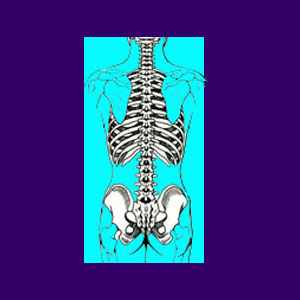
Sacroiliac joint dysfunction is a diagnosis implicating the soft tissues, and particularly the ligaments, inside the SI joint as the potential source of severe and chronic discomfort. SI dysfunction is a condition that is often diagnosed by exclusion, rather than by definitive causative evidence.
As with many other lower back pain syndromes, it is relatively impossible to disprove as the source of suffering, yet most diagnoses fall short of providing any actual proof either. This makes SI joint dysfunction an ideal scapegoat for causing treatment resistant back pain and sciatica.
SI joint dysfunction can take one of 2 possible diagnostic forms in most patients. The first possibility theorizes that the ligaments which regulate the joint are too tight. Chronic tightness may cause tension inside the joint, possibly enacting pain. The second possibility of a pain mechanism speculates that the ligaments are too loose and cause the joint to lose strength and stability. In these instances, patients may find that they have difficulty supporting their weight on the affected side. Usually, this feels like severe hip pain and the true causative issue may well reside inside the hip anatomy, instead of the SI joint.
This dissertation provides a comprehensive view of SI joint dysfunction caused by overly lax or overly taut ligamentous concerns.
Sacroiliac Joint Dysfunction Symptomology
Typical cases of sacroiliac joint pain behave identical to many other lower back pain and sciatica conditions. Pain in the low back, buttocks and legs is common. Tingling, numbness, and weakness in the back, buttocks and legs are also combination neurological symptoms experienced by the majority of patients. Pain can be worsened or improved through activity, rest, position or any number of other factors.
Usually, these types of pain syndromes are blamed on nerve compression in the lumbar spine. However, sometimes, there are no structural issues deemed causative in this region, so focus turns towards the SI joint. Remember, the SI is only a few inches away.
Regardless of whether the theory states ligament laxity or ligament tension, the symptoms are typically similar. For lax ligaments, some feeling of looseness in the joint may occur, although this is rarely traced definitively to the SI itself and may involve hip issues instead.
SIJ Dysfunction Diagnosis
The most widely used form of SI pain diagnosis is an anesthetic injection into the sacroiliac joint. If the pain is relieved, then the SI joint is most often blamed as the suspected cause of symptoms. This is terrible medical technique, since the injection can numb pain along the spinal nerves that may be coming from any number of locations.
This injection will also usually relieve the symptoms of oxygen deprivation back pain in the sacral area, but that diagnosis is almost never made by the treating physician. That in itself is almost criminal, since ischemic back pain is one of the most common forms of chronic back pain suffered worldwide.
Sacroiliac Joint Dysfunction Advisory
Sacroiliac pain does exist, but true SI dysfunction is rare. Most patients diagnosed with SI pain are actually suffering from some other structural issue, disease process, infectious process or mindbody syndrome. The design of the SI joint is nearly perfect and not a usual location for significant degenerative changes. This is one joint that was created to outlast the life of the individual. If you have been diagnosed with SI joint dysfunction and can not find relief, consider the possibility that you have been misdiagnosed.
Learn the facts about the design and function of the SI joint before agreeing to care for any ligament issue diagnosed here. This is especially crucial if your pain has already suffered from diagnostic eclecticism in the past and SI joint dysfunction is simply the newest proposed theory in a long line of other mistaken causations.




